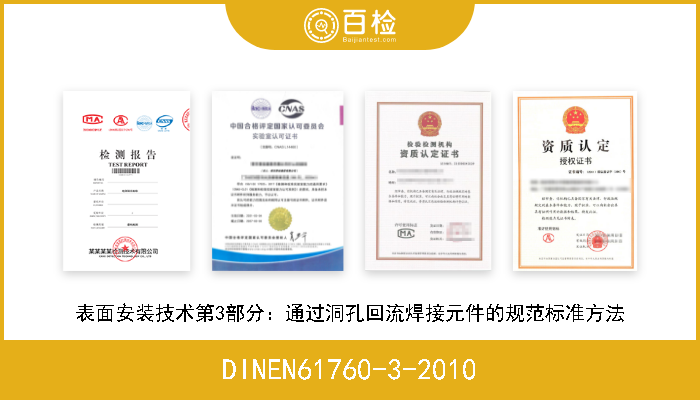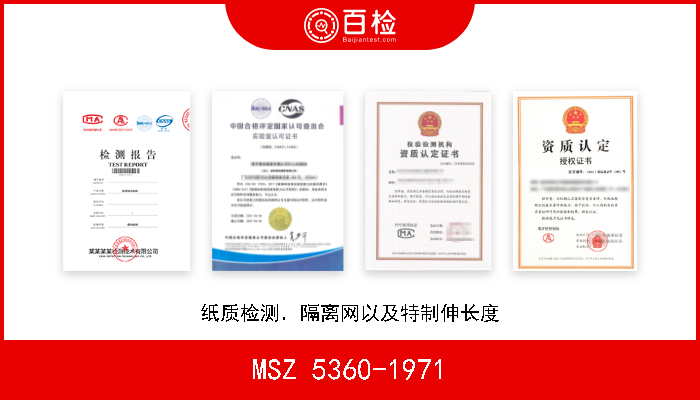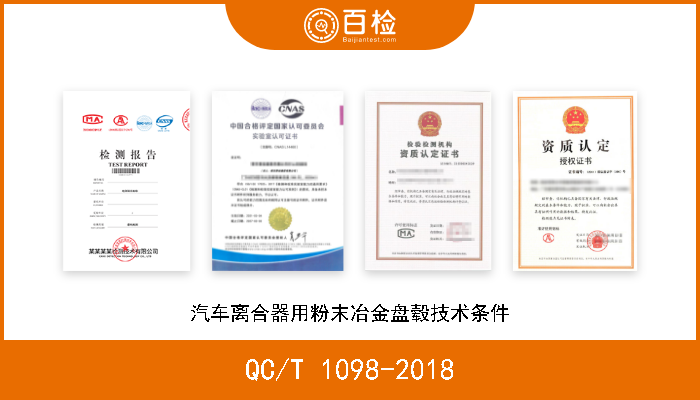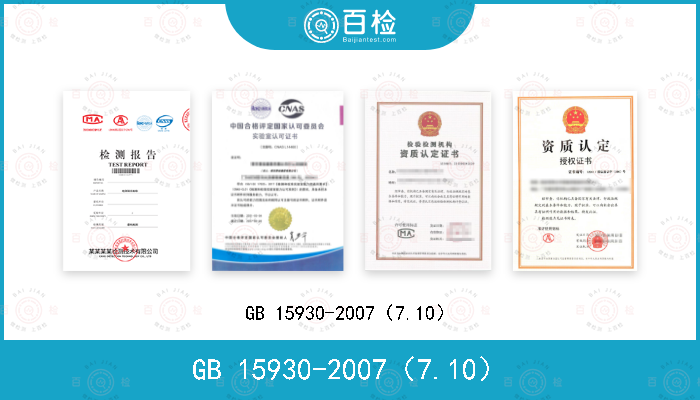ISO 15186-2-2003 声学.用声强测定建筑物和建筑构件的隔声性能.第2部分:现场测量
百检网 2021-08-04
标准号:ISO 15186-2-2003
中文标准名称:声学.用声强测定建筑物和建筑构件的隔声性能.第2部分:现场测量
英文标准名称:Acoustics - Measurement of sound insulation in buildings and of building elements using sound intensity - Part 2: Field measurements
标准类型:Z32
发布日期:1999/12/31 12:00:00
实施日期:1999/12/31 12:00:00
中国标准分类号:Z32
国际标准分类号:91.120.20
适用范围:1 General This part of ISO 15186 specifies a sound intensity method to determine the in-situ sound insulation of waits, floors, doors, windows and small building elements. It is intended for measurements that have to be made in the presence of flanking transmission. It can be used to provide sound power data for diagnostic analysts of flanking transmission or to measure flanking sound insulation parameters. This part of ISO 15186 can be used by laboratories that could not satisfy the requirements of ISO 15186-1, which deals with laboratory measurements with no or little flanking transmission. ISO 15186-3 deals with measurements under laboratory conditions, at low frequencies. This part of ISO 15186 also describes the effect of flanking transmission on measurements made using the specified method, and how intensity measurements can be used — to compare the in-situ sound insulation of a building element with laboratory measurements where flanking has been suppressed (i.e. ISO 140-3), — to rank the partial contributions for building elements, and — to measure the flanking sound reduction index for one or more transmission paths (for validation of prediction models such as those given in EN 12354-1). This method gives values for airborne sound insulation, which are frequency dependent. They can be converted into a single number, characterizing the acoustic performance, by application of ISO 717-1. 2 Precision The reproducibility of this intensity method is estimated to be equal to or better than that of the methods of ISO 140-10 and ISO 140-4, when measuring a single small and large building element, respectively. If sound reduction measures made using this method are to be compared with those made using the conventional reverberation room method in various parts of ISO 140, then it will be necessary to introduce an adaptation term that reflects the bias between the test methods. This term is given in Annex A. NOTE 2 Some information about the accuracy for this part of ISO 15186 and its relationship to the sound reduction index measured according to ISO 140-3 and ISO 140-4 is given in Annex B. NOTE 3 Flanking transmission is discussed in Annex C.
中文标准名称:声学.用声强测定建筑物和建筑构件的隔声性能.第2部分:现场测量
英文标准名称:Acoustics - Measurement of sound insulation in buildings and of building elements using sound intensity - Part 2: Field measurements
标准类型:Z32
发布日期:1999/12/31 12:00:00
实施日期:1999/12/31 12:00:00
中国标准分类号:Z32
国际标准分类号:91.120.20
适用范围:1 General This part of ISO 15186 specifies a sound intensity method to determine the in-situ sound insulation of waits, floors, doors, windows and small building elements. It is intended for measurements that have to be made in the presence of flanking transmission. It can be used to provide sound power data for diagnostic analysts of flanking transmission or to measure flanking sound insulation parameters. This part of ISO 15186 can be used by laboratories that could not satisfy the requirements of ISO 15186-1, which deals with laboratory measurements with no or little flanking transmission. ISO 15186-3 deals with measurements under laboratory conditions, at low frequencies. This part of ISO 15186 also describes the effect of flanking transmission on measurements made using the specified method, and how intensity measurements can be used — to compare the in-situ sound insulation of a building element with laboratory measurements where flanking has been suppressed (i.e. ISO 140-3), — to rank the partial contributions for building elements, and — to measure the flanking sound reduction index for one or more transmission paths (for validation of prediction models such as those given in EN 12354-1). This method gives values for airborne sound insulation, which are frequency dependent. They can be converted into a single number, characterizing the acoustic performance, by application of ISO 717-1. 2 Precision The reproducibility of this intensity method is estimated to be equal to or better than that of the methods of ISO 140-10 and ISO 140-4, when measuring a single small and large building element, respectively. If sound reduction measures made using this method are to be compared with those made using the conventional reverberation room method in various parts of ISO 140, then it will be necessary to introduce an adaptation term that reflects the bias between the test methods. This term is given in Annex A. NOTE 2 Some information about the accuracy for this part of ISO 15186 and its relationship to the sound reduction index measured according to ISO 140-3 and ISO 140-4 is given in Annex B. NOTE 3 Flanking transmission is discussed in Annex C.
百检能给您带来哪些改变?
1、检测行业全覆盖,满足不同的检测;
2、实验室全覆盖,就近分配本地化检测;
3、工程师一对一服务,让检测更精准;
4、免费初检,初检不收取检测费用;
5、自助下单 快递免费上门取样;
6、周期短,费用低,服务周到;
7、拥有CMA、CNAS、CAL等权威资质;
8、检测报告权威有效、中国通用;
客户案例展示
相关商品
版权与免责声明
①本网注名来源于“互联网”的所有作品,版权归原作者或者来源机构所有,如果有涉及作品内容、版权等问题,请在作品发表之日起一个月内与本网联系,联系邮箱service@baijiantest.com,否则视为默认百检网有权进行转载。
②本网注名来源于“百检网”的所有作品,版权归百检网所有,未经本网授权不得转载、摘编或利用其它方式使用。想要转载本网作品,请联系:service@baijiantest.com。已获本网授权的作品,应在授权范围内使用,并注明"来源:百检网"。违者本网将追究相关法律责任。
③本网所载作品仅代表作者独立观点,不代表百检立场,用户需作出独立判断,如有异议或投诉,请联系service@baijiantest.com
行业热点









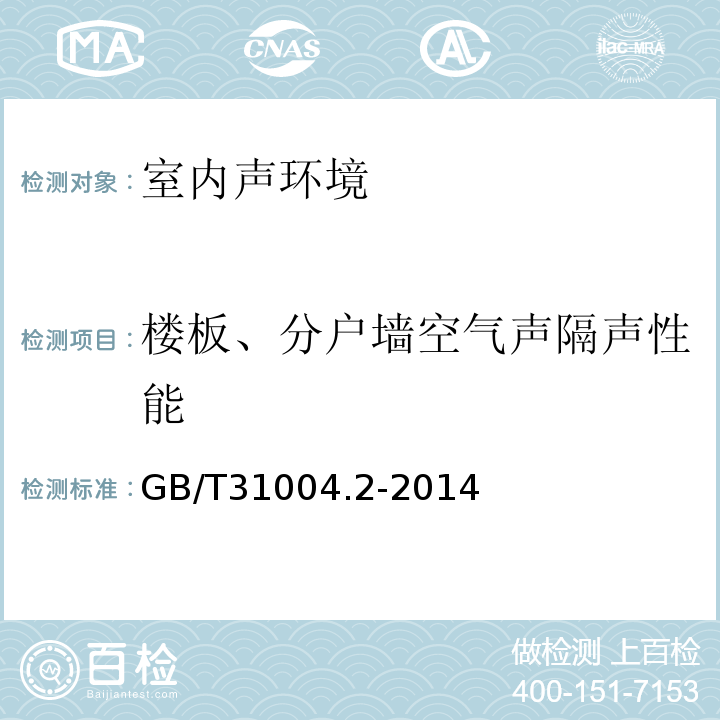
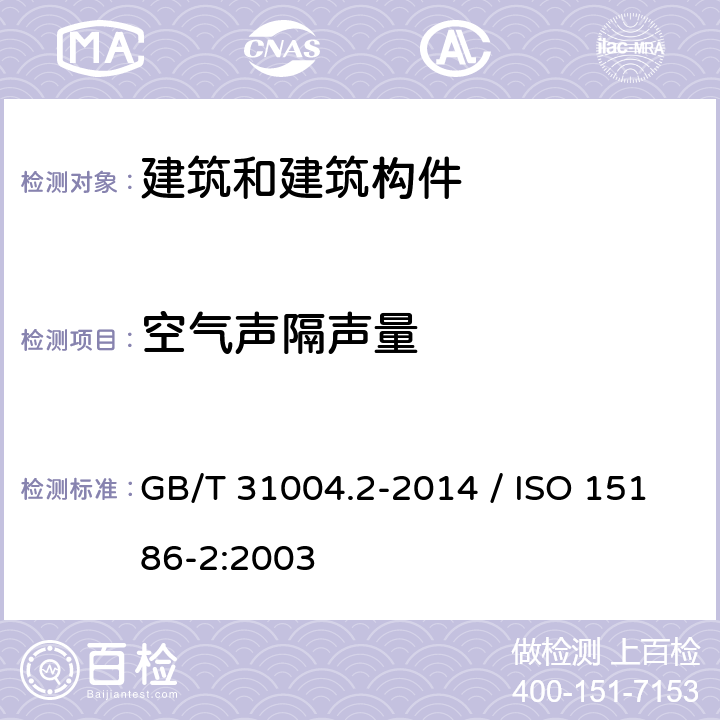

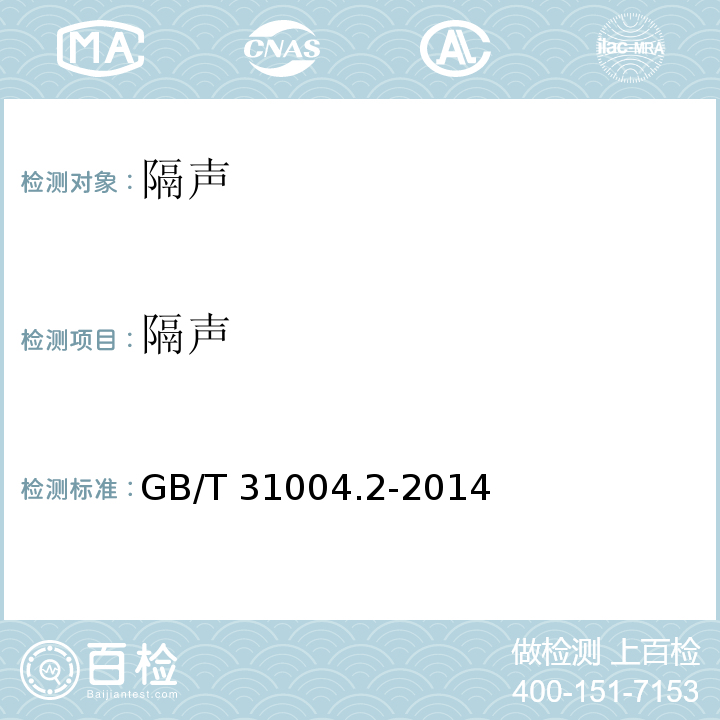
.png)
